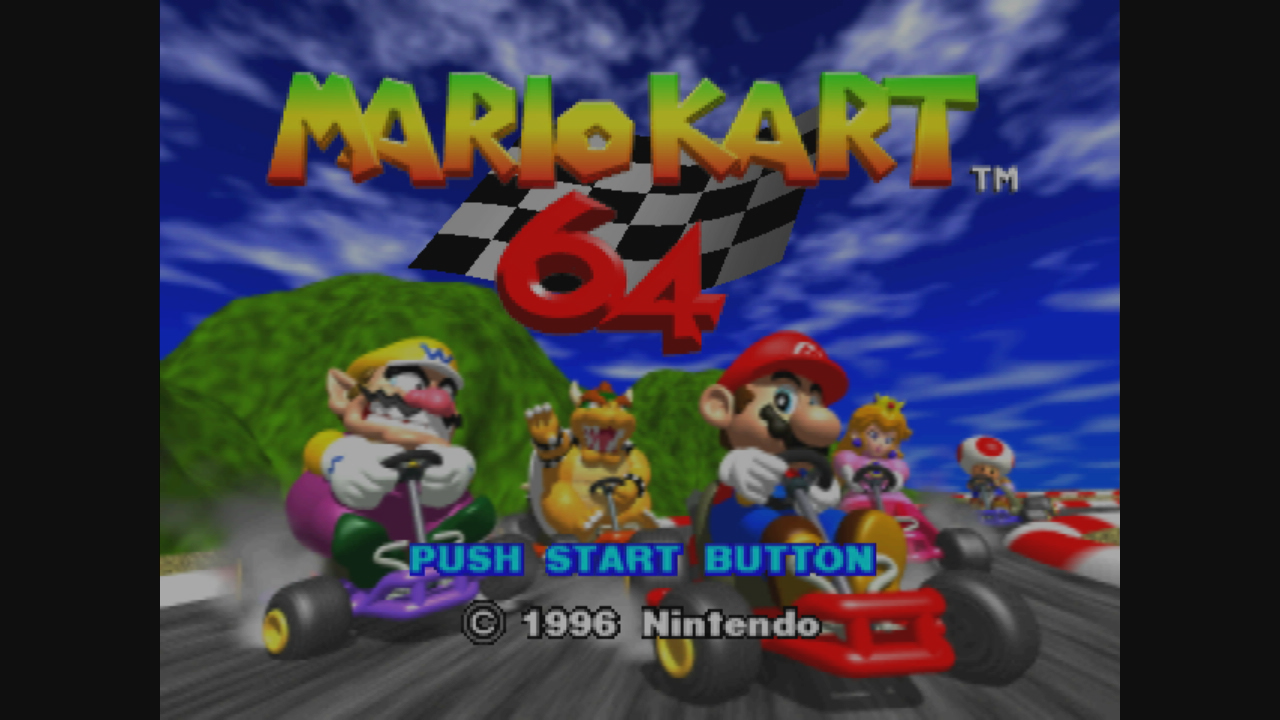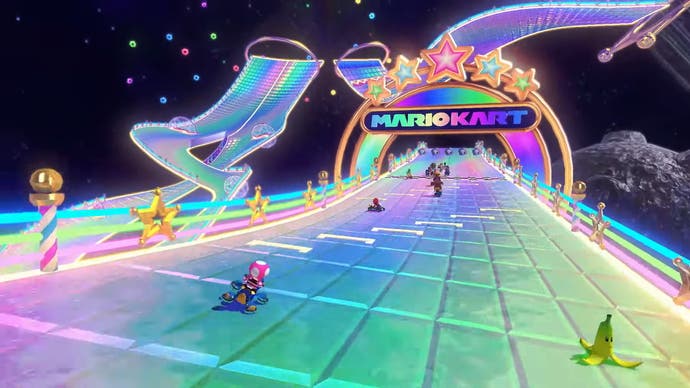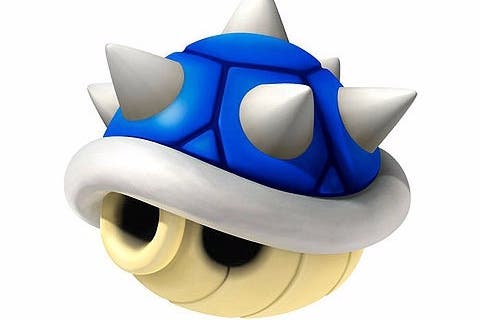Does Mario Kart's Blue Shell even work? An investigation
We still Lakitu use it.
Mario Kart's Blue Shell (officially, the Spiny Shell) is one of the most iconic items in video game history. It's also one of the most controversial. A mainstay of the series since Mario Kart 64, the Blue Shell is a laser-guided missile targeted at the player in first place. It is near-unavoidable, and completely unavoidable in older games. Every Mario Kart player knows the feeling of dread - and childlike injustice - that accompanies the Blue Shell's sudden, high-pitched siren whine, announcing an unceremonious end to your pleasant race lead. But a research project at Queen's University Belfast has asked a fascinating question about the Blue Shell: does it even work?
Of course, the Blue Shell works in a literal sense - it blows up first place's hopes and dreams with depressing accuracy. The question is whether it does what it's designed to do, and what people believe it does. And if it doesn't, then why is it such a core part of the game?
The Blue Shell's fame can disguise its unusual status in gaming: it's surprisingly rare for items in competitive multiplayer to specifically target the leader, let alone to incapacitate them for multiple seconds. "Isn't it [...] a little bit unfair?" Kotaku sceptically asked Hideki Konno, 'the man behind Mario Kart', back in 2011. Now, one answer would be that it doesn't have to be fair: 'unfair' game mechanics are deeply important to how many games function. Overly hard bosses, unforeseeable traps, and harsh punishments can help build a world, give a game a sense of risk and difficulty, and shape player responsiveness.
But that's not the answer Konno gave. Instead, Konno stated that the Blue Shell was invented to try to increase the competitiveness and fairness of races: "We wanted to create a race where everyone was in it until the end." Various defences of the Blue Shell are based on the same idea: that the Blue Shell is 'obviously' a mechanism to preserve competitiveness. "Most obviously it's the Great Equaliser - the soaring blue embodiment of pure carnage that gives players at the back of the pack a fighting chance," argued Nathan Grayson in 2014, citing a video by popular YouTuber Extra History: "One reason for the Blue Shell to exist is obviously to serve as a catch-up mechanism [...] The Blue Shell helps to ensure that no one gets left completely in the dust without a chance to come back."
But is that true? Does the Blue Shell help to keep races competitive? Alex McMillan, then a master's student in computer science at QUB, set out to test this bit of gaming folk wisdom. They devised a metric called 'competitive proximity' to measure how close Mario Kart races are: essentially, it's an averaging of the distance between each consecutive pair of cars - first and second, second and third, and so on - so it measures how close the race is as a whole, rather than just the race between first and second. (Beating Pink Yoshi to fifth in a duff race can be what clinches the tournament for you, after all, and the Blue Shell is specifically meant to help out those in the back.)

Then, they tested it out. 50 test participants completed three races each in Mario Kart 64, all on Luigi's Raceway (to avoid environmental hazards affecting the results). One race had the regular likeliness of getting a Blue Shell; one made it three times more likely than usual that you'd get a Blue Shell, as long as you were far back enough to be eligible for one; and one removed the Blue Shell entirely.
The result? Blue Shells don't significantly affect how close Mario Kart races are. They might make the race leader swear loudly enough to scare the cat, but unlike, say, Golden Mushrooms or Bullet Bills, the player who gets a Blue Shell isn't going to be meaningfully helped by getting one. So, it's pretty official: the Blue Shell isn't a fairness or competitiveness mechanic, and it doesn't do what it was officially designed to do.
But Kosuke Yabuki, the director of Mario Kart 7 and 8, told Eurogamer in 2017 that when developers have experimented with removing the Blue Shell, they've concluded that "there's something not quite enough in the game". So, even though the Blue Shell's mechanical function is surprisingly small over the course of a race, it has an important psychological function for players. What might that be?

In their conclusion, McMillan speculates that the Blue Shell is for players whose goal has changed: they are so far off the pace that they no longer anticipate winning, and may feel disengaged from the race. The Blue Shell gives far-back players an "illusion of agency", allowing them to "still feel like they are affecting the race". The Blue Shell allows the group of players to feel a sense of excitement and schadenfreude that accompanies the race leader's panic, but it also specifically allows the player who threw it to feel noticed, impactful, and dangerous. In a game with a lot of pent-up frustration, the Blue Shell allows the backmarkers to take out their frustration on the race leader, and this might help the group - or even a solo player - release some built-up tension and feel more positive about playing.
Yabuki himself hints at this: "Something I personally really consider is the human emotion element of the play experience," he says, "[and] if you have something that feels unfair or makes you angry... Everyone is different in that respect. What you will feel is unfair might be different to someone else." Yabuki describes wanting to balance the emotions of the experience, so that even if a given player feels frustrated on a given day, they'll still return to Mario Kart next week. The Blue Shell, then, may help spread frustration across a wider group, rather than keeping it concentrated on particular players.
Items that prioritise speed, particularly at the expense of other players, are usually the most useful for helping back-of-the-pack racers to catch up: "Lightning actually does what players want the Blue Shell to do, because it slows down everyone except you," McMillan notes. So if you actually want to challenge for the win, prioritise speed items. But Mario Kart isn't just a video game, it's also most famously a social game, and the Blue Shell's accidental genius comes from that: the Blue Shell can provide a way for less skilled or less lucky players to vent without bringing down the mood, and can work as a reminder to the race leaders to pay attention to their friends, even if it's to give them the middle finger.
So, next time you send someone a Blue Shell, be sure to remind them that it's in the spirit of friendship.


